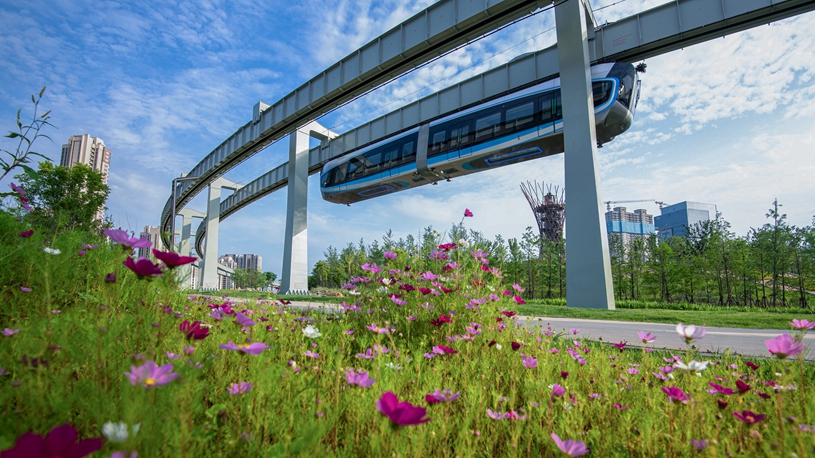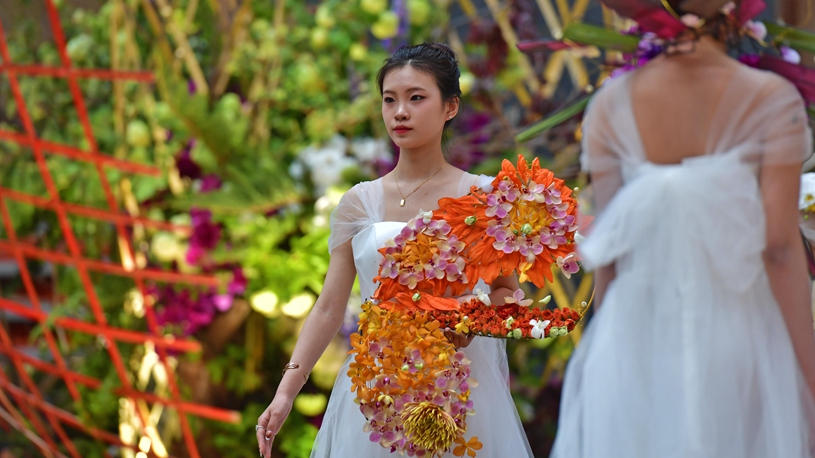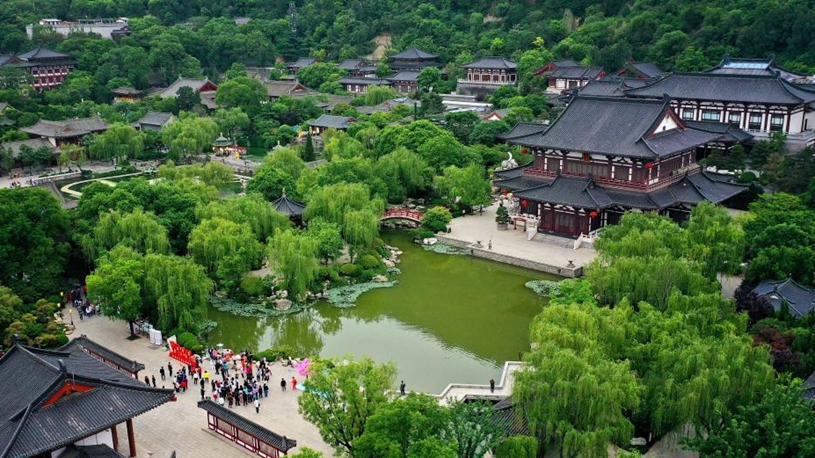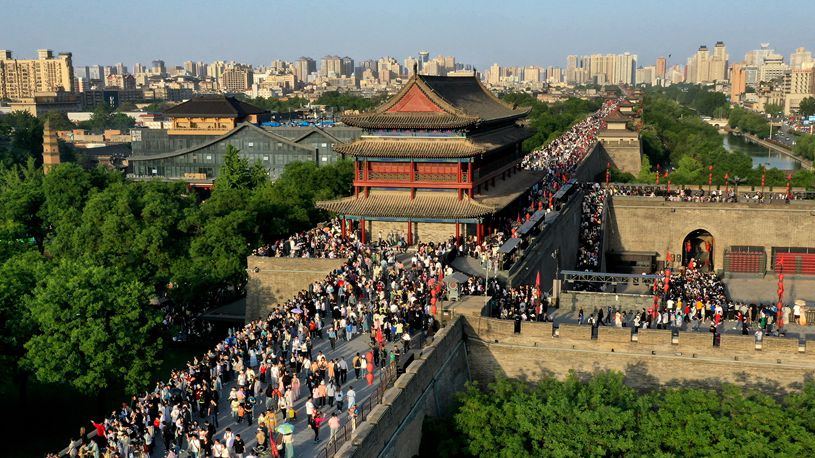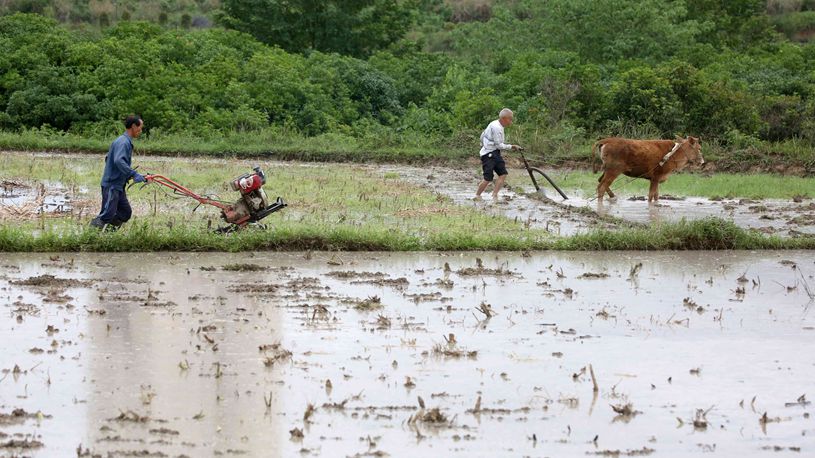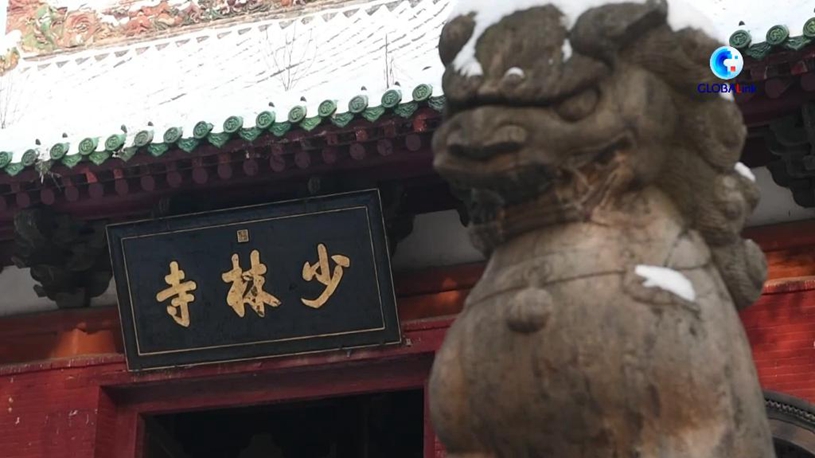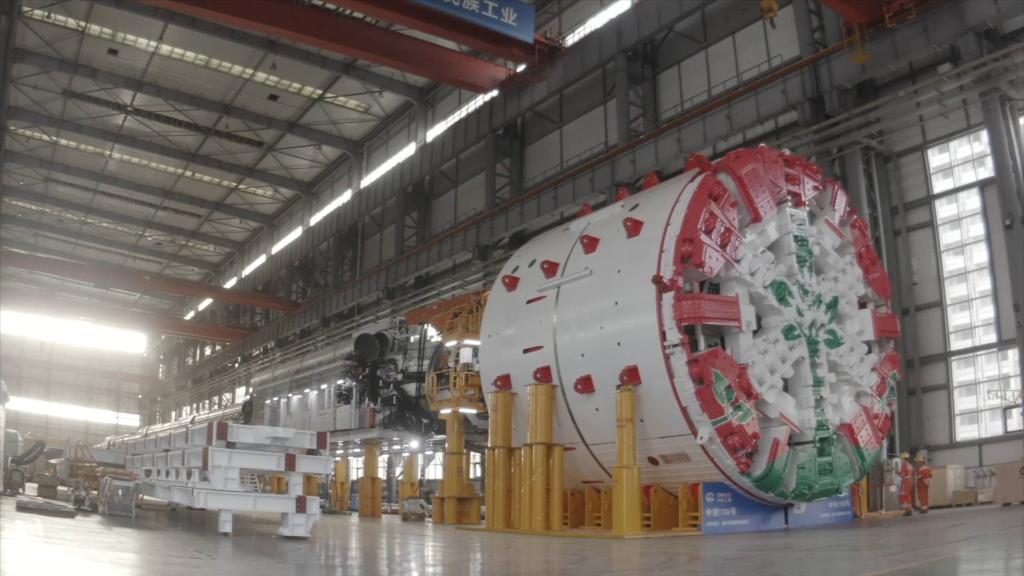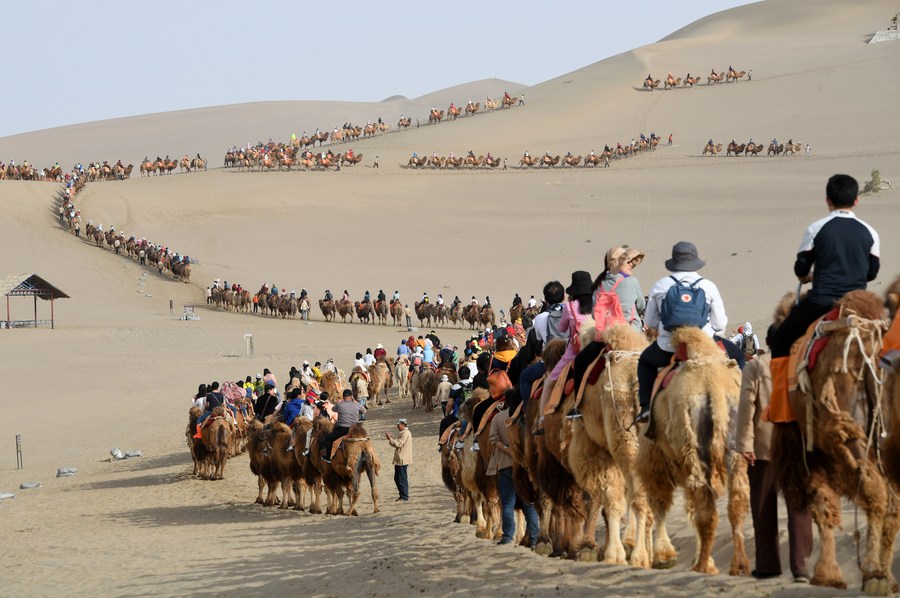
Tourists ride camels in the Crescent Spring and Mingsha Sand Dune scenic area in Dunhuang, northwest China's Gansu Province, on May 1, 2019. (Xinhua/Fan Peishen)
LANZHOU, May 12 (Xinhua) -- On the shore of Yueya Spring, a crescent-shaped lake surrounded by desert, which is famous as an oasis adjacent to the Mogao Grottoes, a UNESCO World Heritage Site, villager Cao Wenhua brushes the hair of 18 camels before herding them to start a day of work.
During the recent May Day holiday, a 4-km camel ride from the oasis to nearby sand dunes on Mingsha Mountain in Dunhuang City, northwest China's Gansu Province, was among the country's top tourist attractions.
"Camels are timid animals, and they must be trained to adapt to getting along with people," Cao said, explaining that brushing is a soothing massage for camels which helps them get familiar with human touch.
During the travel peak period, Cao had to walk the camels on the tourist route, shuttling three times a day.
Camel ride tours remind people of the scene of camel caravans traversing the dry sands along the ancient Silk Road, exchanging goods between the East and the West, which makes a camel ride experience an attractive activity for modern tourists.
The village by the lake has earned a reputation as a camel village, as each of the 200-plus households depends on the success of the camel ride service, which is one of the main sources of income for villagers.
Cao, 51, said camels used to be raised in the village for plowing at a time when locals made a living by farming in the desert oasis.
Tourism development in the scenic lake area only started in the 1980s. Some villagers took camels to the lakeside for tourists to ride. Since then, the camel team has grown, and camels have become a vital part of the booming tourist industry.
Driven by rising tourist demand, the number of camels in the village has increased from around 900 in 2012 to some 2,400 now, and the price of a camel has also increased to about 10,000 yuan (about 1,442 U.S. dollars).
Cao said he was reluctant to take over the camel business at the age of 25, when his father was too old to continue the work.
"The sunshine in the desert is scorching," he said, adding that his former job as a migrant worker earned him more money than the camel ride business at that time.
Now with the tourist boom, he considers the camel riding work rewarding. "I also enjoy chatting with tourists along the camel ride," he said.
Since the start of this year, the scenic spot has received more than 300,000 tourists, an increase of over 40 percent compared with the same period of 2019.
The tourist boom even caused occasional "camel traffic jams" in the scenic area, where camel traffic lights have been set up along the route.
Zhao Fuyun, deputy Party chief of the village, said that tourism development has also generated other business opportunities. In addition to the camel ride service, there are businesses such as bed and breakfasts (B&Bs), local specialty sales and catering services.
The average household income in the village reaches 100,000 to 200,000 yuan per year, and the village's collective income is about 1 million yuan per year.
Zhao said nowadays villagers voluntarily keep the environment tidy, while some are learning English and Japanese to better seize business opportunities. ■

